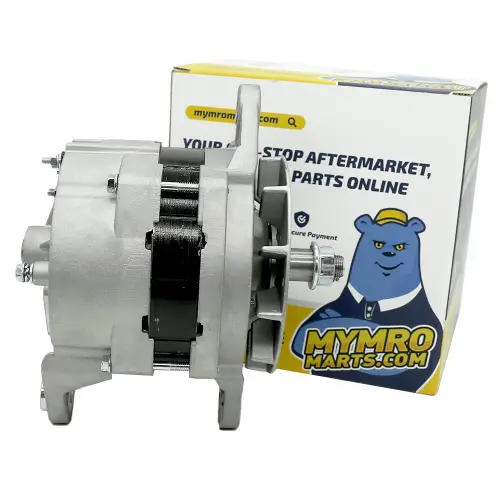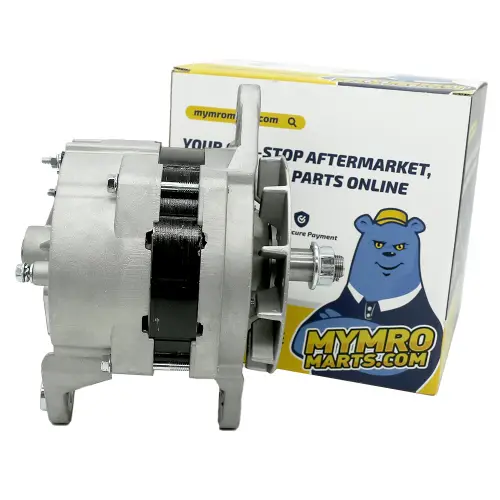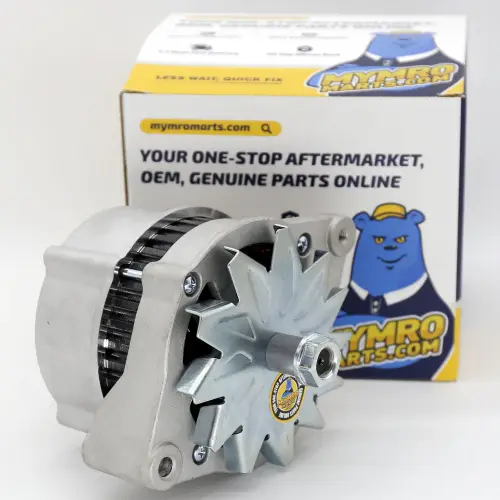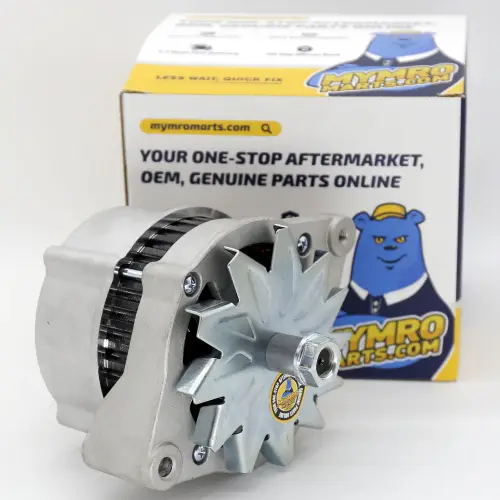Exploring Alternators: Function, Differences from Generators, and Operation
What Is an Alternator?
what is an alternator? An alternator is a type of electrical generator that transforms mechanical energy into alternating current. Most alternators use a revolving magnetic field with a stationary armature for cost and simplicity reasons. On rare occasions, a rotating armature with a stationary magnetic field or a linear alternator will be employed. Although, in theory, any AC electrical generator might be referred to as an alternator, the phrase often refers to compact rotating machines powered by internal combustion engines seen in automobiles and other vehicles.
A magneto is an alternator that generates its magnetic field using a permanent magnet. Turbo-alternators are the name for the alternators used in steam turbine-powered power plants. The majority of the world's electricity is produced by large 50 or 60 Hz three-phase alternators in power plants and is then delivered by electric power networks.
Alternators typically have a high power output capability to meet the needs of complex electrical systems in large mechanical vehicles. They can provide electrical power to the vehicle's lighting system, air conditioning system, communications equipment and other electrical devices. In addition, alternators can recharge the vehicle's battery to maintain its charge, ensuring proper operation and providing the energy needed for starting.
In summary, alternators for large mechanical vehicles are special generators capable of generating alternating current to meet the vehicle's electrical needs. They play a vital role in the proper operation of large mechanical vehicles, providing a stable and reliable power supply for various electrical systems and equipment. If you need an aftermarket alternators, you can also choose us. We can provide you with good quality of cat 257b alternator and so on.
What's the Difference Between an Alternator and a Generator?
Alternators and generators are two often used appliances that produce electrical power. Despite the fact that they both have the same goal in mind—producing electricity—they differ significantly from one another. We shall examine and contrast what's the difference between an alternator and a generator in this blog.
The operating principles of an alternator and a generator are fundamentally different from one another. By using electromagnetic induction, an alternator produces electrical power. It generates an alternating current (AC) in the stator windings using a spinning magnetic field. A generator, on the other hand, works by using a stationary magnetic field and a rotating armature to transform mechanical energy into electrical energy.
In terms of construction, alternators and generators have different designs. An alternator typically consists of a stationary stator and a rotating rotor, which houses the magnets. The stator contains the wire windings that generate the electrical output. In contrast, a generator typically features a stationary magnetic field produced by permanent magnets or electromagnets, along with a rotating armature that contains wire windings.
Another notable difference between alternators and generators is their output characteristics. Alternators produce alternating current (AC), which periodically changes its direction. This is the most common form of electrical power used in homes, businesses, and many electrical devices. Generators, on the other hand, can produce either alternating current (AC) or direct current (DC), depending on the specific design and configuration.
Alternators and generators also differ in their voltage regulation mechanisms. Alternators have built-in voltage regulators that maintain a stable output voltage, ensuring a consistent power supply regardless of the electrical load. Generators, however, often require external voltage regulation equipment to adjust and stabilize the output voltage.
A generator or an alternator is chosen based on the intended function. Alternators are often used in vehicles like cars, trucks, and huge machinery to power the electrical systems and recharge the battery. To provide backup power during blackouts or as the major power source in remote places, generators are often used in many other industries, including the building, manufacturing, and residential ones.
Moreover, it should be noted that there are many difference between alternator and generator, alternators and generators differ significantly in terms of their construction, functionality, output characteristics, and applications. Alternators generate alternating current (AC) by electromagnetic induction, whereas generators use a revolving armature and a stationary magnetic field to transform mechanical energy into electrical energy.
How Does an Alternator Work?
Understanding how does an alternator work will help you get the most out of your device. The electromagnetic induction theory underlies the operation of an alternator. It has a rotor, stator, diodes, and voltage regulator among other important parts. A magnet or group of magnets known as the rotor rotates inside the stator, which is located around it. A belt that is attached to the engine's crankshaft drives the rotor, which spins rapidly. Permanent magnets or a field coil electromagnet can create the magnetic field around the rotor. Automotive alternators use a rotor winding which allows control of the alternator's generated voltage by varying the current in the rotor field winding. Permanent magnet machines avoid the loss due to magnetizing current in the rotor, but are restricted in size, due to the cost of the magnet material. Since the permanent magnet field is constant, the terminal voltage varies directly with the speed of the generator. Brushless AC generators are usually larger than those used in automotive applications.
As the rotor rotates within the stator, the magnets create a changing magnetic field. This changing magnetic field induces an electrical current in the stator windings. The stator windings are made of copper wire arranged in a specific pattern to optimize the generation of electricity. This process generates an alternating current (AC) in the stator windings.
Since the electrical systems in large machinery vehicles typically operate on direct current (DC), the AC produced by the stator windings needs to be converted. To achieve this, the alternator uses a set of diodes. These diodes act as one-way valves, allowing the current to flow in a single direction. They convert the AC into DC, ensuring a consistent flow of electricity in one direction.
To maintain a stable output voltage, alternators have a voltage regulator. The voltage regulator monitors the electrical load of the vehicle and adjusts the field current supplied to the rotor. No of the system's electrical demands, this regulation makes sure the alternator generates a constant and controlled output voltage.
Several systems and components of the car, such as the lights, the air conditioner, the phones, and other electrical accessories, are powered by the electricity generated by the alternator. A portion of the electrical power generated is also used to recharge the vehicle's battery to make sure it runs as efficiently as possible and is accessible for subsequent engine starts.
 Track Your Order
Track Your Order











